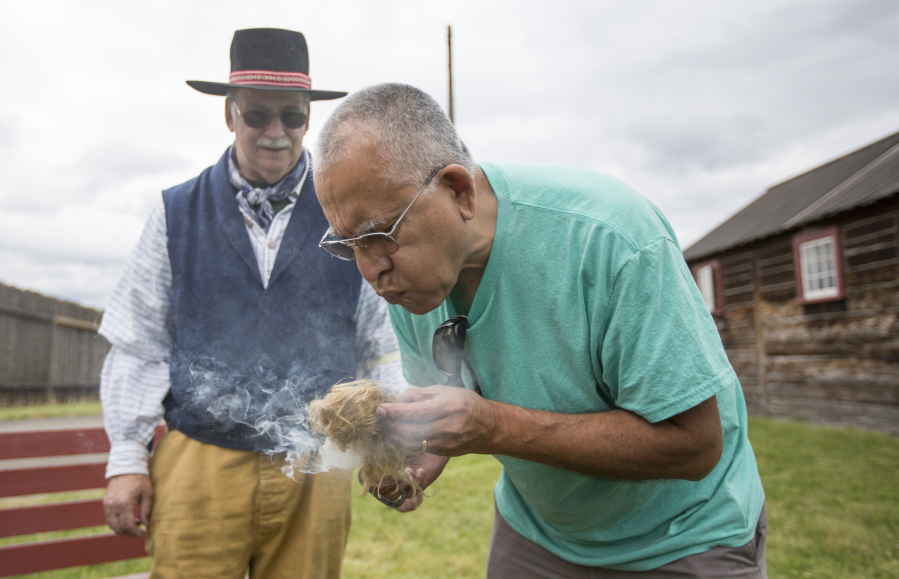Brett Roth, a park guide at Fort Vancouver National Historic Site, shifted back on his heels and took a deep breath.
“There’s a reason we’re doing this,” he said, a bow drill lying before him after he failed, yet again, to start a fire with it.
“It’s because it’s horrible,” he said.
It was a good reminder of how far we’ve come in fire-starting technology. That was what Roth was demonstrating to a small crowd at Fort Vancouver’s kickoff to “Survive and Thrive: Lifeways of the Fur Trade,” a series of classes that will teach participants outdoor survival techniques, both historical and modern. Participants in the course Saturday learned hands-on techniques for starting fires — most of them easier than using a bow drill, Roth noted. Later classes will cover building shelters, tying knots and using tools.
Saturday’s class was small. The few who attended built their own small fire-starter kits and practiced using them. They also tested more modern methods aided by 9-volt batteries and gum wrappers, or, that old standby, a lighter.
Most authentic, however, were those fires started with the aforementioned bow drill and a metal fire striker with flint. Students also created char-cloth kits: cotton fibers slowly burned to pure charcoal in the fort’s replica forge.
“We’re looking at it as a way of giving people a tangible connection to history,” said Roth, who launched the class series last year.
Sibyl Chui, from Camas, said she watches survival shows such as “Alaska: The Last Frontier,” with her sons, ages 13 and 8.
“Right now, a lot of kids watch things on television and it looks so easy to do.”
But Chui and her fellow classmates soon discovered it’s not so easy. Bow drills, an ancient tool for making friction fires, employ a piece of string pulled across curved wood. Students wrapped spindles of wood in the string, then, pushing the spindle into a second piece of wood, pulled the bow back and forth to create friction and, with luck, sparks that could be placed on a bit of fiber to start a flame.
“It brings it down to earth for you,” Chui said.
After several unsuccessful attempts with the bow drill, Jose Palmas of Vancouver flopped down on the grass.
“This is really hard,” he said, panting slightly but smiling.
Palmas said he wants to be ready in case of a natural disaster, such as the massive earthquake expected to hit the Cascadia subduction zone in the future.
“I want to be prepared as much as I can,” he said. “It’s important to have the basics, how to survive.”
Ronnie Jacobson, a Vancouver resident, said she has always been interested in survival skills. Growing up, she participated in camps where she learned to forage and survive in the woods.
Today, her outdoor activities are less intense, restricted mainly to hiking.
But, with a piece of advice helpful as spring and summer hiking begins this Memorial Day weekend, she said you never can tell what might happen out there.
“You never can tell when you’ll be in a place and the weather turns bad,” Jacobson said.




